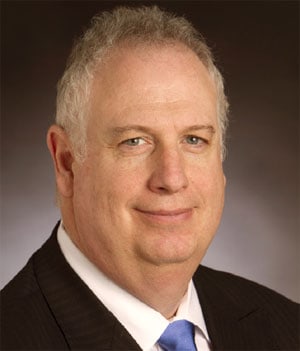CFO INTERVIEW — A GLOBAL VIEW
By Denise Bedell
Nick Fanandakis, EVP and CFO of global agriculture, industrial bioscience and advanced materials company DuPont, sat down with Global Finance to discuss the firm’s growth strategy, resource allocation and cash management practices.
 Global Finance: What would you say are the key risks or challenges in developing markets?
Global Finance: What would you say are the key risks or challenges in developing markets?
Nick Fanandakis: We’re a company that operates in over 90 different countries. We have 32% of our sales in developing regions. You have to be fully aware of the economic environment and the volatility around that. We manage our counterparty risk there very aggressively. We deal with multinational banks in those regions rather than any locals. We do routine sweeps of cash. You have to look at the partners you’re choosing to work with in the region, make sure they’re well respected in the region. Making sure you control your exposure in those areas is key.
GF: One big focus for DuPont is maximizing efficiency of resource allocation. Can you tell me about your strategy and how you measure effectiveness?
Fanandakis: When we look at, for example, R&D, we spend a little over $2 billion a year in DuPont. If you look at our R&D spend over the last five years, it’s increased by 50%. That’s nice, but that isn’t the story. The story is where you’re spending it and how effectively you are spending it. That’s the real key. We have [an internal] process that we call prioritization of initiatives, or POI. Every business will sit down during [budgeting] and develop what they believe are their top opportunities for R&D spend. The same would go for capital. They narrow down to about ten [key] projects. They submit that and then we go through a process at our Office of the Chief Executive (OCE) level. We look at market attractiveness, technology risks, the projected payouts and value. We rank all of those projects as to where we believe we want to spend our resource dollars. That becomes the budget that the businesses work from.
We have a lot of metrics that we use to determine [value creation]. We’ve set a target where we want revenue [from new products] to be 30%. Last year we hit 29%, so we’re starting to reach our objective there, which is great. We also look at top line growth from new products. If you look at growth top-line over a five-year period, almost three-quarters of it is coming from new products and production. The third, from a macro sense, is around margin improvements: We have long-term objectives that we’ve set within each of our businesses around margin improvements. Underneath all that we have individual reviews: We’re looking at cash returns, milestones met, etc. The constant evaluation of those metrics and those projects is just as important as the process you use up front.
GF: Can you describe the risk function at DuPont?
Fanandakis: We have a risk committee, which I sponsor. My treasurer (Donna Grier) chairs the committee. We meet monthly to review risk from a currency standpoint, from a commodity standpoint. Any kind of hedging that is going to be done has to come through that risk committee before it’s implemented. As you would imagine, all of our work in this area around derivatives of that nature are all based on risk mitigation, not any speculative hedging.
[Our process has] changed a lot over the years. There are more areas of concern that we have to evaluate and make decisions on each month. It’s taking more attention not only from us in management, but also the board. The board’s perspective around this has changed and the engagement is much more than it was 10 years ago.
GF: DuPont had more than $4 billion in cash on balance sheet at the end of 2012. How do you ensure that cash is being most effectively utilized?
Fanandakis: I have about $6.5 billion right now. That’s a great question. As I said, we’re a multinational company, so 60% of revenue [is generated] outside [the US] and that revenue generates earnings and cash outside as well. When you look at cash on balance sheet, there’s a substantial amount that is outside the US. Our priorities are around creating value in R&D, around global reach and around execution. On global reach, the ability to fund that is largely supported by the cash we have overseas.
Also, we’re an A, A2-rated company (ratings from S&P and Moody’s, respectively). That’s important to us. We want to maintain that credit rating. It served us very well during the financial crisis. It served us well when we came out of the financial crisis and had the opportunity to buy Danisco, a $7 billion acquisition that we were able to do and still keep our rating.
Agencies do look at your total adjusted net debt. When you look at our gross debt and take off the cash we’re in one place, but then you add the pension liabilities—which are inflated now because of the discount rates—and it puts you in a different perspective from a rating agency view. That level of strength in the balance sheet is really necessary in order to maintain that single-A rating.




